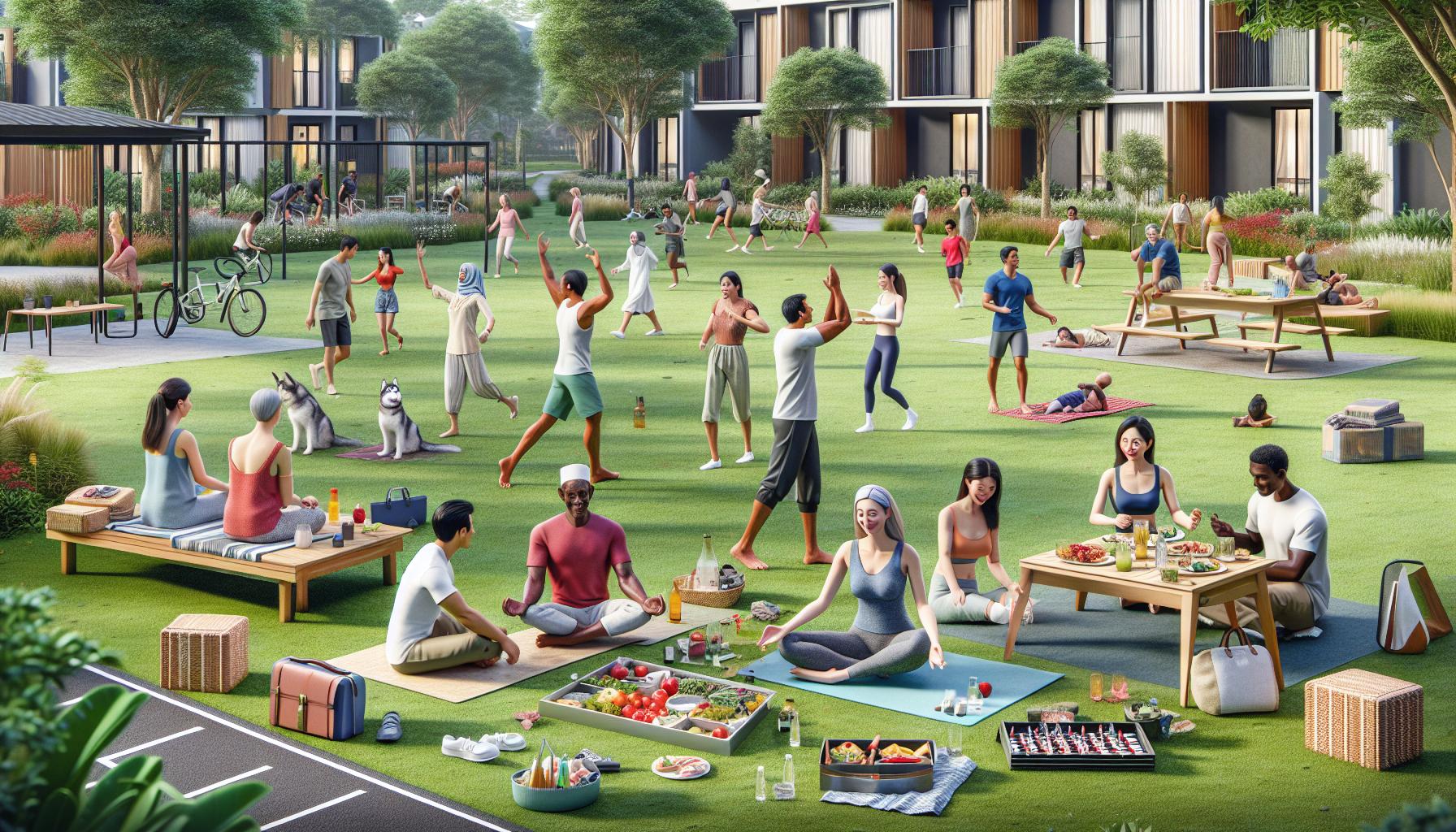Key Takeaways
- Definition of Lifestyle Villages: Lifestyle villages are specialized housing developments that focus on community living, offering various amenities and services catered to residents seeking a vibrant and relaxed lifestyle.
- Community and Social Interaction: These villages promote strong community ties through organized events, clubs, and social activities, enhancing connections and fostering friendships among residents.
- Key Amenities: Common facilities such as parks, fitness centers, swimming pools, and community halls provide opportunities for recreation, health, and social engagement, enriching residents’ daily lives.
- Low Maintenance Living: Lifestyle villages typically offer low maintenance properties, allowing residents to enjoy their leisure time without the burden of extensive home upkeep and repairs.
- Careful Consideration for Choosing: Important factors when selecting a lifestyle village include location and accessibility to essential services, as well as understanding the fee structures and financial obligations associated with living in these communities.
- Enhanced Quality of Life: Overall, lifestyle villages provide a supportive and enriching environment that promotes well-being and active lifestyles, making them an attractive choice for many individuals and families.
Lifestyle villages are becoming increasingly popular among those seeking a vibrant community and a more relaxed way of living. These unique developments cater to individuals and families looking for a blend of comfort, convenience, and connection. With a focus on leisure and well-being, lifestyle villages offer a range of amenities and activities designed to enhance everyday life.
Typically located in picturesque settings, lifestyle villages provide a sense of belonging and a supportive environment. Residents enjoy easy access to recreational facilities, social events, and essential services, all within a close-knit community. As more people discover the benefits of this lifestyle, understanding what a lifestyle village truly offers can help them make informed choices about their next home.
What is a Lifestyle Village
A lifestyle village is a specialized housing development designed for individuals and families seeking a balanced blend of community, amenities, and convenience. These villages emphasize a relaxed living environment, often featuring well-planned neighborhoods that promote social interaction and active lifestyles.
Amenities typically include recreational facilities such as gyms, swimming pools, and walking trails, enhancing residents’ daily experiences. Social activities, including clubs and events, foster connections among residents, creating a vibrant community atmosphere.
Lifestyle villages are often situated in attractive locations, benefiting from natural surroundings that contribute to a serene living experience. Accessible essential services, such as shops, health care, and public transport, further enhance the appeal of these developments. Residents enjoy the advantages of a supportive community while benefiting from their independence in a secure environment.
Key Features of Lifestyle Villages

Lifestyle villages offer key features that enhance the living experience for residents. These include strong community living aspects and access to a variety of amenities and services.
Community Living
Community living thrives in lifestyle villages. Residents often find opportunities for social interaction through organized events, clubs, and group activities. These villages promote a culture of inclusivity, encouraging neighbors to connect and build lasting friendships. Regular gatherings, such as potluck dinners and fitness classes, foster camaraderie and active participation, enriching the overall living experience.
Amenities and Services
Amenities and services play a crucial role in lifestyle villages. Common facilities include:
- Recreational Spaces: Parks, walking trails, and swimming pools provide residents with options for outdoor activities and relaxation.
- Fitness Centers: Onsite gyms cater to residents pursuing health and wellness, offering various equipment and class options.
- Community Halls: These spaces host events and gatherings, promoting engagement and interaction among residents.
- Essential Services: Many villages include shops, healthcare facilities, and public transport access, ensuring convenience and ease for residents in daily tasks.
These features contribute significantly to the appeal and functionality of lifestyle villages, enabling a comfortable and fulfilling lifestyle.
Advantages of Living in a Lifestyle Village

Lifestyle villages offer numerous advantages that enhance residents’ quality of life. These benefits include low maintenance living and ample social opportunities, ensuring a fulfilling and enjoyable lifestyle.
Low Maintenance
Low maintenance living is a significant draw for many residents in lifestyle villages. Properties in these communities typically feature modern designs, durable materials, and professional landscaping, minimizing the need for upkeep. Regular maintenance services often cover common areas, leaving individuals free to enjoy leisure time without the burdens of extensive home repairs or yard work. This focus on ease allows residents to spend more time on activities they enjoy rather than home maintenance tasks.
Social Opportunities
Social opportunities abound in lifestyle villages, fostering a strong sense of community. Organized events, clubs, and group activities encourage participation and interaction among residents, promoting new friendships and connections. Regular social gatherings allow individuals to engage with neighbors while pursuing shared interests, such as arts and crafts, fitness classes, and outdoor activities. An active calendar of events ensures that residents enjoy a vibrant lifestyle, with chances to socialize and meet new people regularly.
Considerations When Choosing a Lifestyle Village

Selecting a lifestyle village requires careful consideration of several factors. These components significantly influence the overall experience and satisfaction of residents.
Location and Accessibility
Location plays a crucial role in determining the suitability of a lifestyle village. Proximity to essential services such as grocery stores, healthcare facilities, and public transport enhances daily convenience. Scenic views, natural surroundings, and local attractions contribute to the overall quality of life. Accessibility matters as well; residents should evaluate traffic patterns and commute times to ensure easy travel to nearby urban centers or recreational areas. A well-located village provides a balance between tranquility and accessibility without sacrificing convenience.
Fees and Financial Aspects
Understanding the financial commitments associated with a lifestyle village is essential for informed decision-making. Communities often have different fee structures that include entry costs, monthly or annual fees, and additional charges for services or amenities. Evaluating these financial aspects helps residents gauge the overall affordability and value of living in the village. It’s important to consider potential increases in fees over time, ensuring they align with personal budgets. Transparency about financial obligations fosters trust and allows residents to enjoy their lifestyle without financial stress.
Choosing The Right Lifestyle Village
Lifestyle villages offer a unique living experience that balances community engagement with modern conveniences. These vibrant environments cater to those seeking a fulfilling lifestyle enriched by social interactions and recreational opportunities. With their focus on low maintenance living and well-planned amenities, residents can enjoy their leisure time without the burdens of traditional homeownership.
Choosing the right lifestyle village involves considering location, accessibility, and financial commitments. By understanding these factors, individuals can find a community that aligns with their needs and preferences. Ultimately, lifestyle villages present an appealing option for anyone looking to enhance their quality of life in a supportive and active setting.